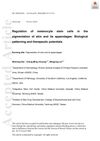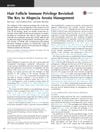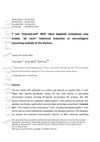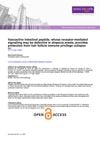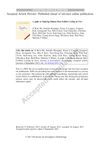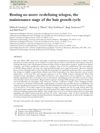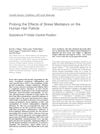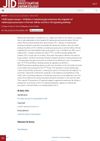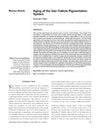Hair Matters in Melanoma Biology
May 2020
in “
Trends in molecular medicine
”
melanocytes melanocyte stem cells hair follicle immune-privileged site bulge region proinflammatory signals oncogenic transformation melanoma BRAF V600E mutation CD4+ T cells CD8+ T cells neurohormones neuropeptides anagen growth stage neural crest cells melanoblasts tumor suppressor PTEN terminal hair vellus hair ultraviolet radiation skin cancer MeSCs HF BRAF mutation T cells anagen stage UV radiation
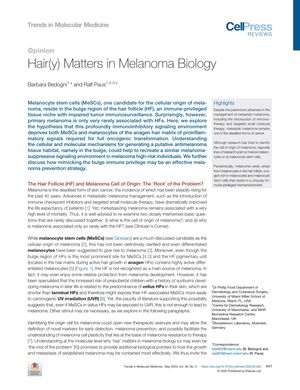
TLDR The document concludes that the immune-inhibitory environment of the hair follicle may prevent melanoma development.
The document discusses the paradox that, despite the abundance of melanocytes and melanocyte stem cells (MeSCs) in the hair follicle (HF), which is an immune-privileged site, melanoma rarely originates from this location. The hypothesis presented is that the immune-inhibitory environment of the HF, particularly in the bulge region where MeSCs reside, may lack the proinflammatory signals necessary for oncogenic transformation, thus preventing melanoma development. The paper suggests that understanding the mechanisms that create this melanoma-suppressive environment could lead to strategies for preventing melanoma in high-risk individuals by mimicking the immune privilege of the HF bulge. Additionally, the document touches on the role of the BRAF V600E mutation in melanoma, the immune functions of CD4+ and CD8+ T cells, and the expression of neurohormones and neuropeptides in the anagen growth stage of the HF cycle that contribute to immune privilege. It also describes the origin of melanocytes from neural crest cells, the differentiation of melanoblasts into melanocytes or MeSCs in the bulge, and the tumor suppressor function of PTEN, which is often mutated in melanomas with BRAF mutations. The document concludes by differentiating between terminal and vellus hair and describing the types of ultraviolet radiation and their association with skin cancer risk.
